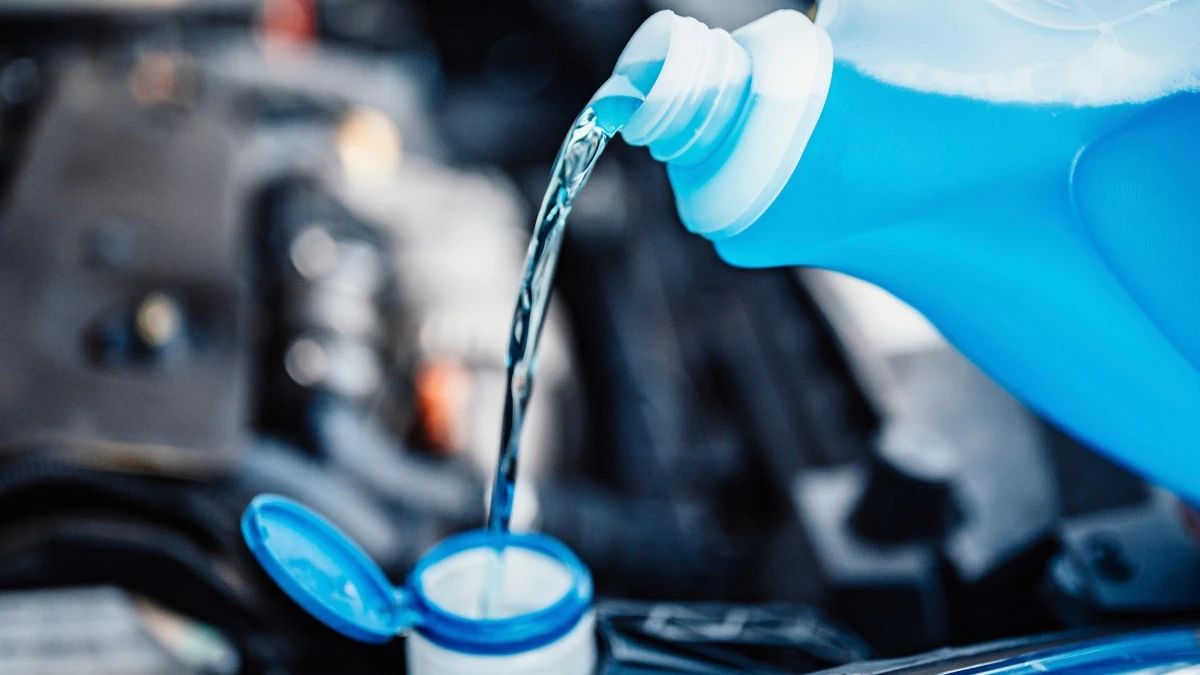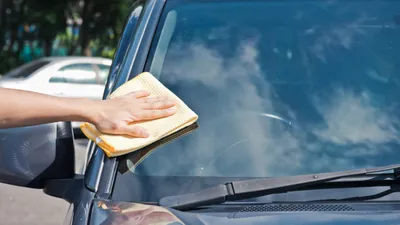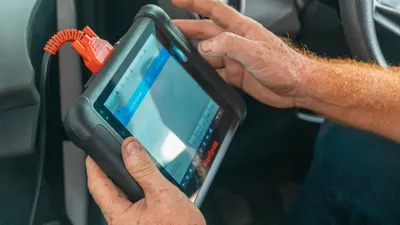5 Essential Winter Tips for Protecting Your Auto Glass
Sarah Williams
Operations Manager

Introduction
Winter presents unique challenges for vehicle maintenance, and your auto glass is particularly vulnerable during these cold months. From freezing temperatures to road salt and increased debris, winter conditions can take a severe toll on your windshield and windows.
Proper winter care isn't just about preserving your auto glass—it's about ensuring your safety. Visibility is often compromised during winter driving, making the integrity of your windshield even more critical. This article outlines five essential tips to protect your auto glass throughout the winter season, helping you maintain clear visibility and prevent costly damage.
1. Proper Defrosting Techniques
One of the most common causes of winter windshield damage is improper defrosting. Many drivers, rushing to get on the road, make mistakes that can lead to cracked or damaged glass.
Never Use Hot Water
Using hot water to clear ice from your windshield is one of the worst things you can do. The sudden temperature change can cause the glass to expand rapidly, leading to cracks or even complete breakage. This is especially true if your windshield already has small chips or weak points.
Start Your Vehicle and Use the Defrost Setting
The safest method for defrosting your windshield is to start your vehicle and use the defrost setting:
- Start your vehicle and set your heater to the defrost setting
- Begin with cool air and gradually increase the temperature as the interior warms up
- Direct the airflow toward your windshield
- Be patient—allow 5-10 minutes for the defrost process to work naturally
This gradual warming prevents thermal shock to your windshield and is much gentler on the glass than aggressive scraping or hot water.
Use Proper Ice Scrapers
When you do need to use an ice scraper:
- Use a plastic scraper designed specifically for auto glass—never metal tools
- Scrape in one direction rather than back and forth
- Apply gentle, even pressure rather than forceful chipping
- Start from the edges where defrosting typically begins first
Remember that patience is key. Rushing the ice removal process almost always leads to damage.
Consider Using a De-Icing Spray
Commercial de-icing sprays can accelerate the process without damaging your windshield. You can also make your own by mixing two parts rubbing alcohol with one part water and a few drops of dish soap. Apply this to your windshield the night before an expected frost for easier morning removal.
2. Avoid Temperature Extremes
Winter creates situations where your auto glass experiences dramatic temperature changes, which can stress the glass and lead to cracks.
Gradual Interior Warming
When you first enter your cold vehicle:
- Start with cool air from your vents, not hot air
- Gradually increase the temperature over a few minutes
- Avoid directing hot air directly at a cold windshield
- Wait until the car begins to warm before blasting the heat
This gradual approach reduces the stress on your windshield from rapid temperature changes.
Park Strategically When Possible
Where you park can make a significant difference in protecting your auto glass:
- Use a garage whenever possible
- If a garage isn't available, park facing east so morning sun helps melt windshield ice
- Use a windshield cover or blanket to prevent ice accumulation
- Avoid parking under trees where ice or snow might fall onto your vehicle
Strategic parking reduces the need for aggressive defrosting and protects your auto glass from extreme temperatures.
Be Careful with Remote Starters
While remote starters are convenient, they can sometimes lead to problems:
- Ensure your climate control isn't set to maximum heat before using remote start
- Use the "defrost" setting rather than "high heat" for remote starts
- Consider adjusting your remote start duration to allow for gradual warming
Remote starters should be used to begin the gentle defrosting process, not to blast heat at a frozen windshield.
3. Winter Wiper Care
Your windshield wipers play a crucial role in winter visibility, and proper wiper care also protects your windshield from damage.
Never Use Wipers on Ice
One of the most damaging winter habits is using wipers to clear ice:
- Never activate wipers when they're frozen to the windshield
- Don't use wipers to "break up" ice on the windshield
- Ensure wipers are completely free of ice before operating them
- Gently lift wipers away from the windshield when parking in icy conditions
Using wipers on ice can damage both the wiper blades and your windshield, and can potentially burn out your wiper motor.
Install Winter Wiper Blades
Winter-specific wiper blades offer several advantages:
- They have a more robust design that prevents ice buildup
- The rubber compound remains flexible in cold temperatures
- They typically provide more consistent pressure across the windshield
- They're designed to handle the heavier precipitation of winter
Investing in quality winter wiper blades improves visibility and prevents windshield scratching.
Use Winter Washer Fluid
Standard washer fluid can freeze in winter temperatures:
- Use washer fluid rated for the lowest temperatures in your area
- Never use plain water, which will freeze and can damage your washer system
- Keep your washer fluid reservoir full—running out in winter conditions severely compromises visibility
- Consider carrying an emergency bottle of winter-rated washer fluid in your vehicle
Winter washer fluid helps keep your windshield clean without freezing, ensuring clear visibility in harsh conditions.
Clean Wiper Blades Regularly
Winter road grime, salt, and ice can build up on wiper blades:
- Periodically wipe down the rubber edge with a cloth dampened with washer fluid
- Check for ice buildup at the base of the wipers where they connect to the wiper arms
- Ensure wipers return completely to their rest position
Clean wipers perform better and are less likely to scratch or damage your windshield.
4. Repair Chips Immediately
Small chips and cracks that might be stable in mild weather often worsen rapidly during winter due to freeze-thaw cycles and temperature fluctuations.
Winter Amplifies Existing Damage
Even minor windshield damage becomes more problematic in winter:
- Moisture that seeps into cracks can freeze and expand, causing the crack to spread
- Temperature fluctuations cause the glass to expand and contract, stressing weak points
- Road salt can penetrate chips and corrode the inner layer of laminated windshields
- Winter driving conditions create additional vibration and stress on the glass
What starts as a minor chip in fall can easily become a major crack requiring full replacement by spring.
Professional Repair Options
Modern windshield repair technology makes addressing small damage convenient:
- Most chips smaller than a quarter can be effectively repaired
- Professional repairs take 30-60 minutes and many services are mobile
- Repairs preserve the factory seal and structural integrity of your windshield
- Many insurance policies cover chip repair with no deductible
At Clearview Autoglass, we recommend addressing any chip or crack before winter weather arrives, but immediate attention is essential if damage occurs during winter months.
Temporary Protection Measures
If you can't get immediate repair, you can take these temporary measures:
- Clean the damaged area gently with auto glass cleaner
- Apply clear nail polish or specialized windshield repair tape to prevent moisture intrusion
- Be extra careful when defrosting to avoid thermal shock to the damaged area
- Schedule professional repair as soon as possible
These temporary measures can help prevent a chip from spreading while you arrange professional repair.
5. Maintain Safe Following Distance
Prevention is the best approach to winter auto glass care, and one of the most effective preventive measures is adjusting your driving habits.
Increased Road Debris in Winter
Winter roads typically have more debris that can damage your windshield:
- Road salt and sand can be kicked up by vehicles ahead
- Ice chunks can dislodge from vehicles and become projectiles
- Plowed snow piles often contain rocks and debris that can be thrown by passing vehicles
- Freeze-thaw cycles can create more potholes, leading to loose pavement
All these factors increase the likelihood of windshield damage during winter months.
Double Your Normal Following Distance
The "three-second rule" for following distance should be extended in winter:
- Maintain at least a six-second following distance on winter roads
- Increase this further during active precipitation
- Give commercial trucks and snowplows even more space
- Remember that stopping distances increase dramatically on slippery roads
This extra space not only improves safety but significantly reduces the chances of debris striking your windshield.
Be Careful Around Snowplows and Trucks
Some vehicles present particular hazards to your auto glass in winter:
- Stay well back from snowplows, which throw sand, salt, and sometimes rocks
- Avoid passing snowplows when possible
- Give extra space to trucks and vehicles with snow or ice on their roofs
- Change lanes if you notice a vehicle ahead throwing debris
These precautions help minimize exposure to the most common sources of winter windshield damage.
Conclusion
Winter's unique challenges require special attention to auto glass care. By following these five essential tips—using proper defrosting techniques, avoiding temperature extremes, maintaining your wipers, addressing chips immediately, and keeping safe distances—you can significantly reduce the risk of windshield damage during the cold months.
Remember that visibility is especially critical during winter driving conditions. Properly maintained auto glass isn't just about avoiding repair costs—it's about ensuring your safety and the safety of others on the road.
At Clearview Autoglass, we recommend a pre-winter inspection of your auto glass to address any existing issues before cold weather arrives. If you do experience windshield damage during winter, don't wait for spring—contact us immediately for prompt repair that prevents further damage.
Stay safe this winter with clear visibility and properly maintained auto glass!
About the Author
Sarah Williams
Operations Manager at Clearview Autoglass with 10+ years in the automotive service industry. Responsible for coordinating mobile service teams and ensuring exceptional customer experiences.
Sarah specializes in developing comprehensive service protocols and customer education resources. She holds certifications in automotive management and quality assurance.
Related Articles
Need Winter Auto Glass Service?
Our mobile service comes to you, so you don't have to venture out in the cold. We offer windshield repair, replacement, and winter preparation services to keep you safe on winter roads.


